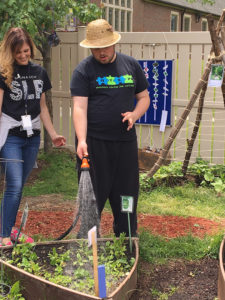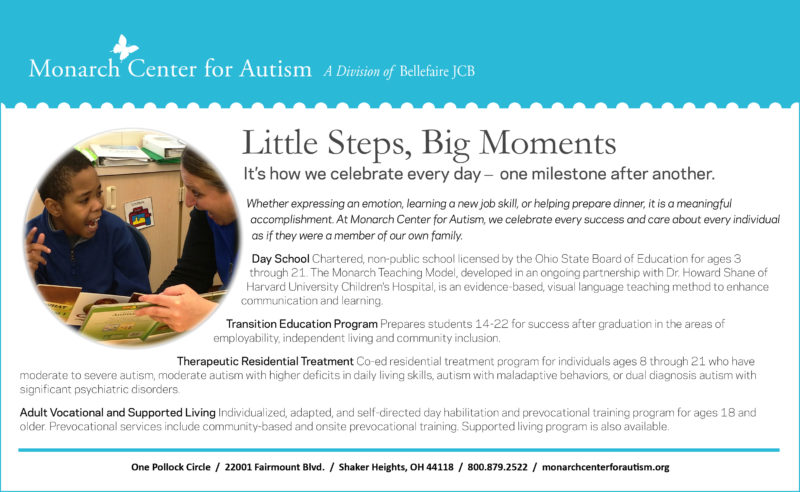With the implementation of the Employment First Initiative, integrated community employment has become a nationwide focus that is affording greater opportunities for students with Autism Spectrum Disorder (ASD). While we’re moving in the right direction, there is still work to be done. According to the 2017 National Autism Indicators Report, approximately 50,000 youth with ASD turn 18 each year. Compared to their peers with other types of disabilities, young adults with autism had the lowest rate of employment. Only 58% of those on the autism spectrum ever worked during their early 20’s, as compared to more than 90% of young adults with emotional disturbance, speech impairment, or learning disability, and 74% of young adults with intellectual disability who ever worked. Nearly 66% of young adults with ASD did not work at all during their first two years after high school, and among those who did, nearly 80% worked part-time and earned an average of $9.11/hour. Full-time workers earned an average of $8.08/hour. Often, due to communication and/or behavior challenges, students with ASD have limited opportunities for career development and work experience while in high school. The lack of employment for adults with autism creates a heightened sense of isolation, despondency, and dependence on others, which negatively impacts society as a whole.

Monarch Transition Education
Program’s Horticulture Fun Friday
Effective school-based transition education programs for individuals ages 14 through 21 with ASD are now more critical than ever. As outlined in the Individuals with Disabilities Education Act (IDEA), Transition Services are designed to facilitate the child’s movement from school to post-school activities including post-secondary education, vocational education, integrated employment (including supported employment), continuing and adult education, adult services, independent living, or community participation. They are based on the individual child’s needs, taking into account the child’s strengths, preferences, and interests; and they include: instruction, related services, community experiences, the development of employment and other post-school adult living objectives, and if appropriate, acquisition of daily living skills and provision of a functional vocational evaluation.
An effective transition education program includes a collaborative learning environment that simulates real-world experiences, and incorporates daily community-based instruction in a natural setting. Students are taught self-direction through practice and mastery of functional routines, and experiential learning supports comprehension and skill generalization. Students achieve independence in numerous critical life skills including: executive functioning, health and safety, self-determination, employability, social competency, consumer awareness, recreation, and independent living, which prepares them to live and work to their optimal potential.
Key components of a successful school-based transition education program include:
A staff comprised of speech, occupational, music, art, horticulture, and behavior therapists, intervention specialists and associate teachers – Success is dependent on this multidisciplinary team being well-versed in both autism and vocational education/transition planning, instructing the on-campus school services and off-campus work site/recreational activities.
A detailed Transition Plan and Individualized Education Plan (IEP) that drive instruction – Transition plans should be person-centered and results-oriented with a focus on student preferences, interests, needs and strengths. They should be developed based on formal and informal assessments of skills in relation to post-secondary education, integrated competitive employment, and independent living. Transition meetings with the student’s multidisciplinary IEP team and interagency team should be scheduled to review both the transition plan and student progress to identify steps for future planning.
On-site simulated work and living experiences – Environments should be evaluated and adapted to meet the unique sensory needs and learning styles of young adults with ASD. Sample environments might include a fitness center, student-run store, janitorial cart, clerical skills center, assembly/packing center, greenhouse/outdoor garden, technology center, microenterprise shop, student café, and independent living centers such as a laundry room and full kitchen.
Community-based work experiences – Schools should create partnerships with a variety of community stakeholders including local stores, hotels, universities, and non-profit organizations. These partnerships provide a wide-range of experiences, which afford students exposure to different career paths and help them make informed choices in future planning. These work experiences enable students to generalize learned skills in a real-life setting, with the oversight of a teacher or therapist. These experiences help students broaden employment networks, enhance social circles, build self-esteem, identify their preferences, interests, needs and strengths, and foster a sense of purpose through meaningful contribution.
Recreational and leisure skills – These skills should initially be systematically taught and then practiced via formed clubs such as game club, fitness club, music groups, and cooking club, which nurture positive socialization and friendship development based on common interests. The incorporation of daily community “explorers” groups that venture to locations including the bank, grocery store, restaurants, parks, and the library, provide important opportunities for students to practice practical, everyday skills.
Life skills – Daily living skills such as hygiene, health, nutrition, personal safety, money management, sexuality, and social boundaries, should be taught and practiced throughout the breadth of a transition education program in a variety of settings to encourage independence and community safety.
Technology and visual supports – The integration of technology is often key to reaching and motivating young adults with ASD. Therapists and teachers can use technology to create individualized visual supports for students which include social stories, visual schedules, topic display boards, video models, and more.
The goal of an effective school-based Transition Education Program is to provide its students with the services and supports they need to make a successful move into adult life, so they are as empowered and independent as possible. With the rising prevalence of ASD diagnoses, the scale of the adult unemployment problem is growing. Improving employment outcomes for those living with ASD is incredibly important. Work opportunities enhance quality of life, economic independence, social integration, and ultimately, they benefit society as a whole.
Thoughtful transition planning, facilitated by qualified therapists/instructors who provide meaningful real-world experiences in varied settings with accompanying supports, can help students with ASD experience opportunities that lead to fulfilling adult lives and meaningful employment.
Debra Mandell can be reached at mandelld@bellefairejcb.org. For more information, visit www.monarchcenterforautism.org.





